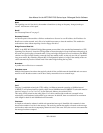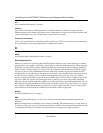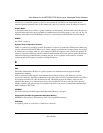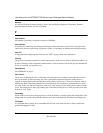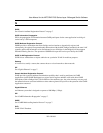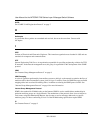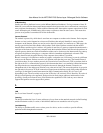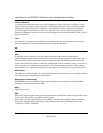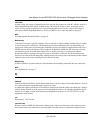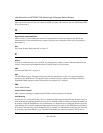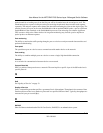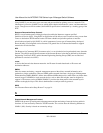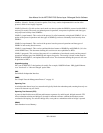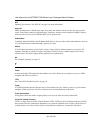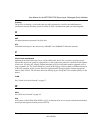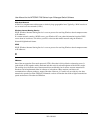
User Manual for the NETGEAR 7200 Series Layer 2 Managed Switch Software
Glossary B-11
202-10010-01
MDI/MDIX
In cable wiring, the concept of transmit and receive are from the perspective of the PC, which is wired as a
Media Dependant Interface (MDI). In MDI wiring, a PC transmits on pins 1 and 2. At the hub, switch,
router, or access point, the perspective is reversed, and the hub receives on pins 1 and 2. This wiring is
referred to as Media Dependant Interface - Crossover (MDI-X). See “Auto-negotiation” on page 2.
MIB
See “Management Information Base” on page 10.
Multicasting
To transmit a message to specific recipients across a network. A simple example of multicasting is sending
an e-mail message to a mailing list. Teleconferencing and videoconferencing also use multicasting, but
require more robust protocols and networks. Standards are being developed to support multicasting over a
TCP/IP network such as the Internet. These standards, IP Multicast and Mbone, will allow users to easily
join multicast groups. Note that multicasting refers to sending a message to a select group whereas
broadcasting refers to sending a message to everyone connected to a network. The terms multicast and
narrowcast are often used interchangeably, although narrowcast usually refers to the business model whereas
multicast refers to the actual technology used to transmit the data.
Multiplexing
A function within a layer that interleaves the information from multiple connections into one connection.
MUX
See “Multiplexing” on page 11.
N
netmask
Combined with the IP address, the IP Subnet Mask allows a device to know which other addresses are local
to it, and which must be reached through a gateway or router.
A number that explains which part of an IP address comprises the network address and which part is the host
address on that network. It can be expressed in dotted-decimal notation or as a number appended to the IP
address. For example, a 28-bit mask starting from the MSB can be shown as 255.255.255.192 or as /28
appended to the IP address.
nm
Nanometer (1 x 10e
9
) meters.
non-stub area
Resource-intensive OSPF area that carries a default route, static routes, intra-area routes, interarea routes,
and external routes. Non-stub areas are the only OSPF areas that can have virtual links configured across



